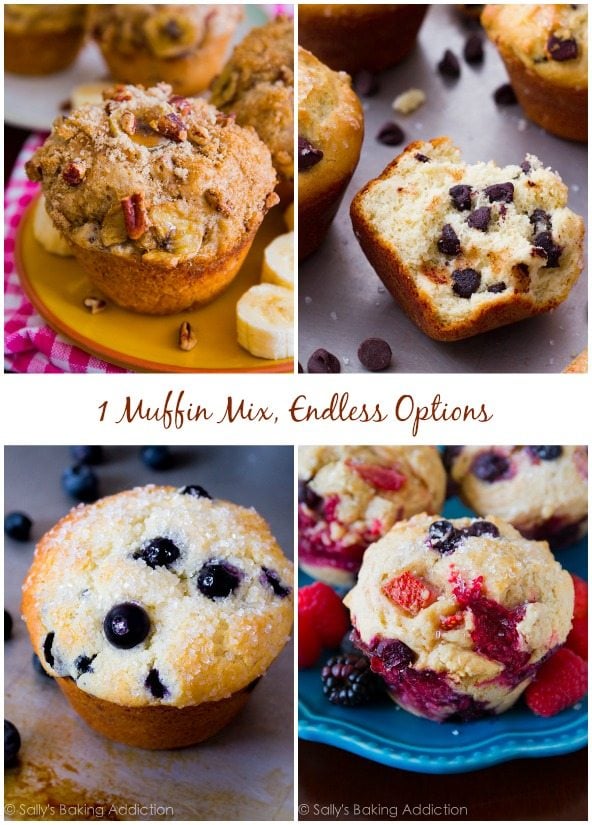I briefly made muffins again for my kiddo but found out after time, it become so hard and stoney! It was a little frustrating, so I was googling up tips and tricks to keep muffins soft.
And these are the few fine tips that makes a whole lotta difference. I used to want to know the science behind the theories but I think she's explained in the most simplest ways ever.
So here are the essential tips (courtesy from Sally's baking addiction - recipes on her page too)

Don’t Skip the Oil
I use oil as the fat in my master muffin batter. As far as baked goods go, fat is a good thing! Oil is what will give your muffins their tender, melt-in-your-mouth centers. Butter is a fat typically used in muffin recipes, but I use oil in this master batter because it leaves the muffins much more moist. Since there are so many flavors in each bite (banana, berry, chocolate – depending on which variety you make), you won’t really miss the taste of butter. For my banana nut version, I added mashed bananas. Because of this added wet ingredient, I left out a bit of oil. Still keeping the same tender, moist texture but giving the muffins their signature banana flavor. The rest of my master muffin mix varieties use 1/2 cup of oil. Feel free to use melted coconut oil or vegetable oil instead of the canola oil called for. One thing to note: I do not suggest using a lower fat option. See all of my healthier muffin options instead.The Purpose of Eggs
Moisture, richness, tenderness, binding the batter, texture. They have heavy lifting power in this recipe; don’t leave them out! Use standard large, room temperature eggs.Why room temperature? Room temperature eggs incorporate evenly into your batter – guaranteeing a uniform structure among every corner of every muffin.
Playing Around with the Milk
My master muffin batter requires 1 cup of milk. When I first developed the recipe last year, I used 1% milk. However, I’ve started using buttermilk instead these days. The resulting muffin is so moist! When I use buttermilk in recipes, I find a noticeable difference in texture than when I use other milks. For example, when I make quick bread, I find the crumb is more tender and moist than the same recipe using regular milk. And the loaf even slices better – it’s not crumbly at all. The same goes for my master muffin batter. I prefer it with buttermilk!Two Additional Muffin Tips
- Something helpful to remember when making my muffins: mix the wet ingredients as much as you like, mix the dry ingredients as much as you like but when you combine the two together, only mix until they combine. If you overmix the wet with the dry, your muffins will be heavy, tough, and dense. Remember: when it comes to mixing muffin batter together, a little goes a long way.
- The trick to baking the muffins so tall? It’s something I do with most of my muffin recipes. Here’s my secret: Fill your muffin pans all the way to the top. This trick only works if you set the initial oven temperature high, then lower it as the muffins bake. Bake the muffins for 5 minutes at 425F degrees, then at 375F degrees for the remaining time. Setting the oven to a “high temperature burst” lifts the muffin top up quickly and creates a tall crust. That is why you fill the muffin pans to the top with the batter prior to baking.













